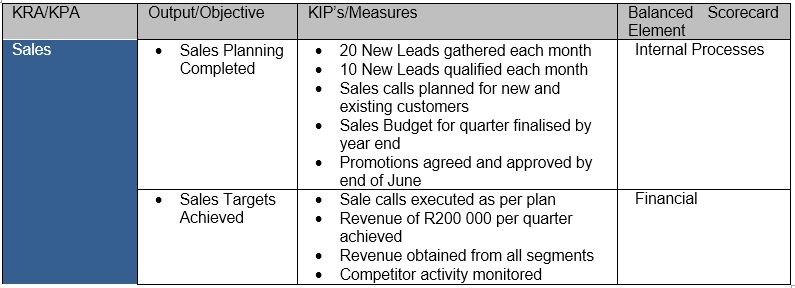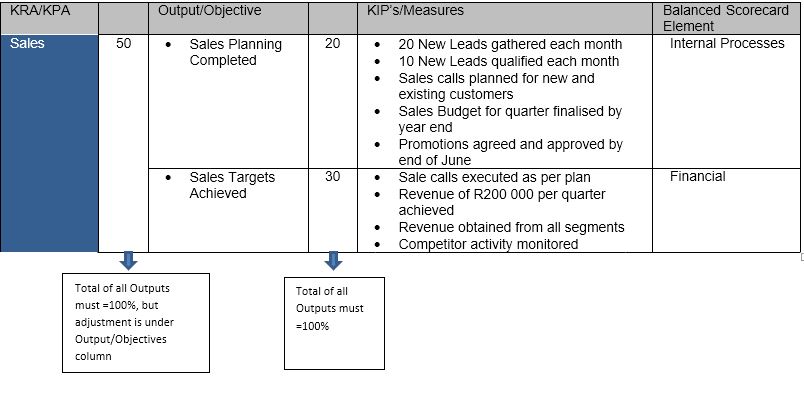5. Putting it all together
The Aspiration format also has 2 other columns that need to be completed. These are KRA/KPA (Key result area/Key performance area and Balanced Scorecard Link. Firstly, we deal with KRA/KPA. These are normally higher-level categories that only require one or two words e.g.
Some companies also use this column to record their strategic objectives. Employees must then align their individual objectives to align to the strategic elements e.g. a company may have a revenue Growth strategy and they can then ensure that people align to this vision
The last element is the Balanced Scorecard element. In the HR world the balanced scorecard is used to ensure that outputs/objectives are not only focused on financial results but the other 3 scorecard elements as well. The balanced scorecard elements are typically the following:
Financial
Internal Processes
Client/Customer Service and relations
Growth and Development (of employees)
However, companies can change this to suit the sector. An airline company that was a client of ours wanted Safety as well, so we added it in.
6. Using Weighting
In the Aspiration format the weight is applied to the Output/Objective. It is not applied to KRA/KPA or the KPI’s Measure. The weighting must add up to 100% and the principle is that some objectives are more important and therefore carry a higher weighting.
For example, someone who scores a 4 (out of 5) for a higher weighted Output/Objective and a 2 for a lower weighted Output/Objective, will score higher than someone who scores a 2 for the higher weighted Output and a 4 for the lower weighted Output.
In the Aspiration format there can be a one to many relationships between KRA/KPA and Output/Objective. The weight for the KRA/KPA is derived from the sum of the weightings for the Outputs/Objectives.
So the final format for the Performance (Outputs) Section is as follows:











